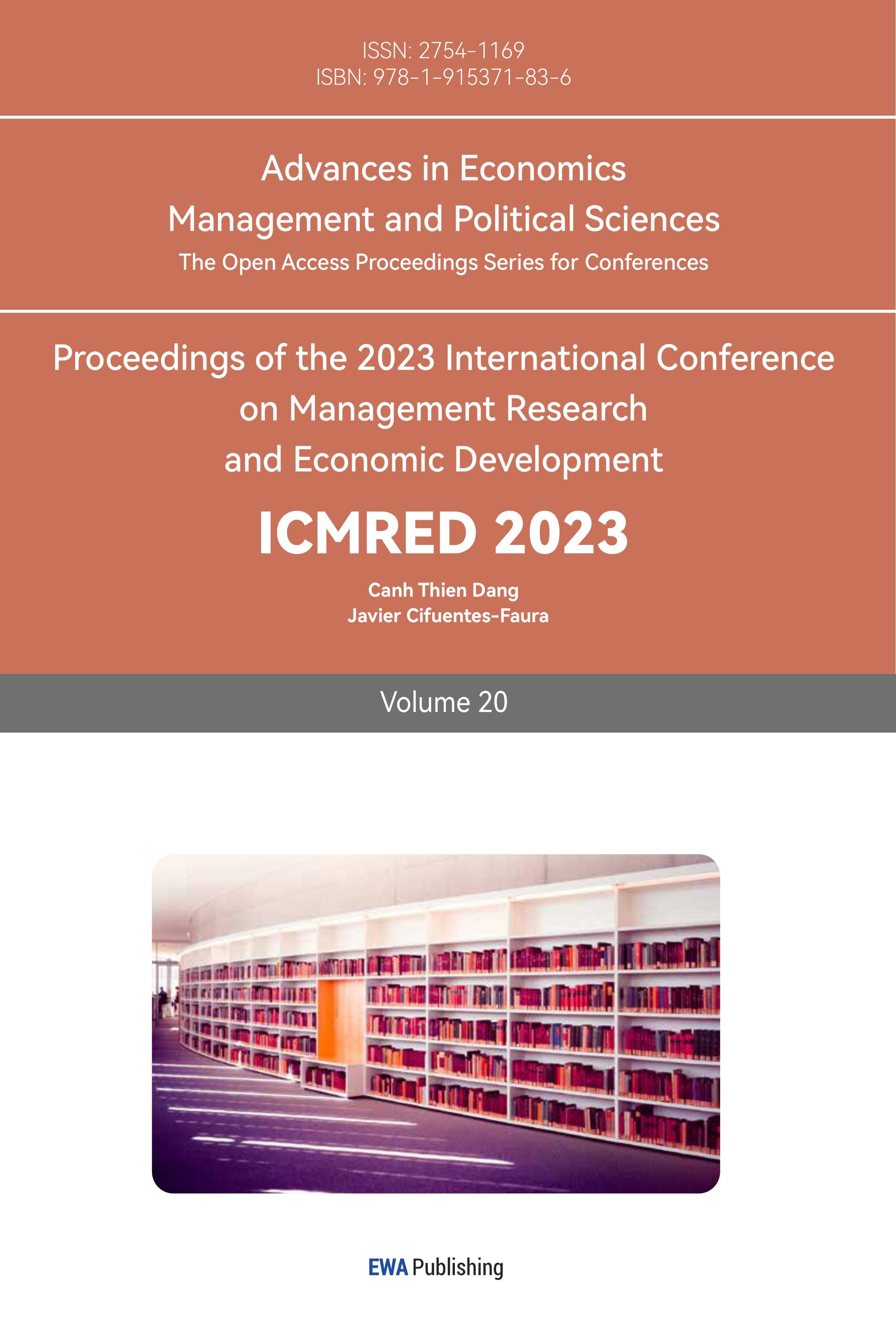References
[1]. Balkin, D. B., & Werner, S. (2022). Theorizing the relationship between discretionary employee benefits and individual performance. Human Resource Management Review, 100901.
[2]. Zhang Y. (2016). Analysis of the design and research of the remuneration management system. Modern SOE Research, 2, 73–74. https://kns.cnki.net/KCMS/detail/detail.aspx?dbcode=CJFD&dbname=CJFDLAST2016&filename=XDGQ201602059&v=
[3]. Froese, F. J., Shen, J., Sekiguchi, T., & Davies, S. (2020). Liability of Asianness? Global talent management challenges of Chinese, Japanese, and Korean multinationals. Human Resource Management Research and Practice in Asia: Past, Present and Future, 30(4), 100776.
[4]. International Monetary Fund. (2023). Population and unemployment rate of China. IMF.
[5]. National Health Commission of People’s Republic of China. (2022, December 26). Notice on the issuance of a general programme for the implementation of ‘Category B’ management of COVID-19 infection.
[6]. Career International. (2020). Career International 2020 Talent Market Insight and Salary Guide.
[7]. National Bureau of Statistics. (2023). Average monetary wages and wage index of employed persons in urban units.
[8]. Hong, P. (2017). The Literature Review on Compensation System Design. Modern Economy, 08(09), 1119–1128. https://doi.org/10.4236/me.2017.89077
Cite this article
Fang,H. (2023). Analysis of the Compensation and Benefit Management System of Chinese Enterprises Before and After COVID-19—Taking Huawei as an Example. Advances in Economics, Management and Political Sciences,20,294-299.
Data availability
The datasets used and/or analyzed during the current study will be available from the authors upon reasonable request.
Disclaimer/Publisher's Note
The statements, opinions and data contained in all publications are solely those of the individual author(s) and contributor(s) and not of EWA Publishing and/or the editor(s). EWA Publishing and/or the editor(s) disclaim responsibility for any injury to people or property resulting from any ideas, methods, instructions or products referred to in the content.
About volume
Volume title: Proceedings of the 2023 International Conference on Management Research and Economic Development
© 2024 by the author(s). Licensee EWA Publishing, Oxford, UK. This article is an open access article distributed under the terms and
conditions of the Creative Commons Attribution (CC BY) license. Authors who
publish this series agree to the following terms:
1. Authors retain copyright and grant the series right of first publication with the work simultaneously licensed under a Creative Commons
Attribution License that allows others to share the work with an acknowledgment of the work's authorship and initial publication in this
series.
2. Authors are able to enter into separate, additional contractual arrangements for the non-exclusive distribution of the series's published
version of the work (e.g., post it to an institutional repository or publish it in a book), with an acknowledgment of its initial
publication in this series.
3. Authors are permitted and encouraged to post their work online (e.g., in institutional repositories or on their website) prior to and
during the submission process, as it can lead to productive exchanges, as well as earlier and greater citation of published work (See
Open access policy for details).
References
[1]. Balkin, D. B., & Werner, S. (2022). Theorizing the relationship between discretionary employee benefits and individual performance. Human Resource Management Review, 100901.
[2]. Zhang Y. (2016). Analysis of the design and research of the remuneration management system. Modern SOE Research, 2, 73–74. https://kns.cnki.net/KCMS/detail/detail.aspx?dbcode=CJFD&dbname=CJFDLAST2016&filename=XDGQ201602059&v=
[3]. Froese, F. J., Shen, J., Sekiguchi, T., & Davies, S. (2020). Liability of Asianness? Global talent management challenges of Chinese, Japanese, and Korean multinationals. Human Resource Management Research and Practice in Asia: Past, Present and Future, 30(4), 100776.
[4]. International Monetary Fund. (2023). Population and unemployment rate of China. IMF.
[5]. National Health Commission of People’s Republic of China. (2022, December 26). Notice on the issuance of a general programme for the implementation of ‘Category B’ management of COVID-19 infection.
[6]. Career International. (2020). Career International 2020 Talent Market Insight and Salary Guide.
[7]. National Bureau of Statistics. (2023). Average monetary wages and wage index of employed persons in urban units.
[8]. Hong, P. (2017). The Literature Review on Compensation System Design. Modern Economy, 08(09), 1119–1128. https://doi.org/10.4236/me.2017.89077









